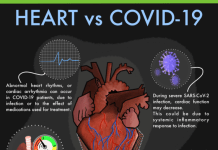The radiofrequency (RF) exposure from mobile phones was not associated with an increased risk of glioma, acoustic neuroma, salivary gland tumours, or brain tumours. There was no observable increase in relative risks for the most investigated types of cancers with increasing time since start, cumulative call time, or cumulative number of calls.
International Agency for Research on Cancer (IARC), the specialized cancer agency of the World Health Organization (WHO) had classified radiofrequency electromagnetic fields (RF-EMF) as possibly carcinogenic to humans in May 2011.
The obvious next step forward was to study if exposure to non-ionizing, radiofrequency (RF) emissions from mobile phones constitute cancer risk. Hence, a systematic review of all relevant epidemiological studies was commissioned by WHO in 2019 to evaluate evidence provided by human observational studies for a causal relationship between exposure to radio emissions and risk of cancers.
The study included 63 aetiological articles reporting on 119 different exposure-outcome (E-O) pairs, published between 1994 and 2022. Radiofrequency exposure from mobile phones, cordless phones and fixed-site transmitters were studied for the outcomes.
The findings of the study were published on 30 August 2024. Since mobile phones have become ubiquitous, the health effects of exposure from the mobile phones are catching public attention.
The study found that the radio exposure from mobile phones was not associated with an increased risk of glioma, acoustic neuroma, salivary gland tumours, or brain tumours. There was no observable increase in relative risks for the most investigated types of cancers with increasing time since start (TSS) use of mobile phones, cumulative call time (CCT), or cumulative number of calls (CNC).
For near field exposure to the head from mobile phone use, there was moderate certainty evidence that it likely does not increase the risk of glioma, meningioma, acoustic neuroma, pituitary tumours, and salivary gland tumours in adults, or of paediatric brain tumours.
For occupational RF-EMF exposure, there was low certainty evidence that it may not increase the risk of brain cancer/glioma.
***
References
- Karipidis K., et al 2024. The effect of exposure to radiofrequency fields on cancer risk in the general and working population: A systematic review of human observational studies – Part I: Most researched outcomes. Environment International. Available online 30 August 2024, 108983. DOI: https://doi.org/10.1016/j.envint.2024.108983
- Lagorio S., et al 2021. The effect of exposure to radiofrequency fields on cancer risk in the general and working population: A protocol for a systematic review of human observational studies. Environment International. Volume 157, December 2021, 106828. DOI: https://doi.org/10.1016/j.envint.2021.106828
- National Cancer Institute. Cell Phones and Cancer Risk. Available at https://www.cancer.gov/about-cancer/causes-prevention/risk/radiation/cell-phones-fact-sheet.
***




































